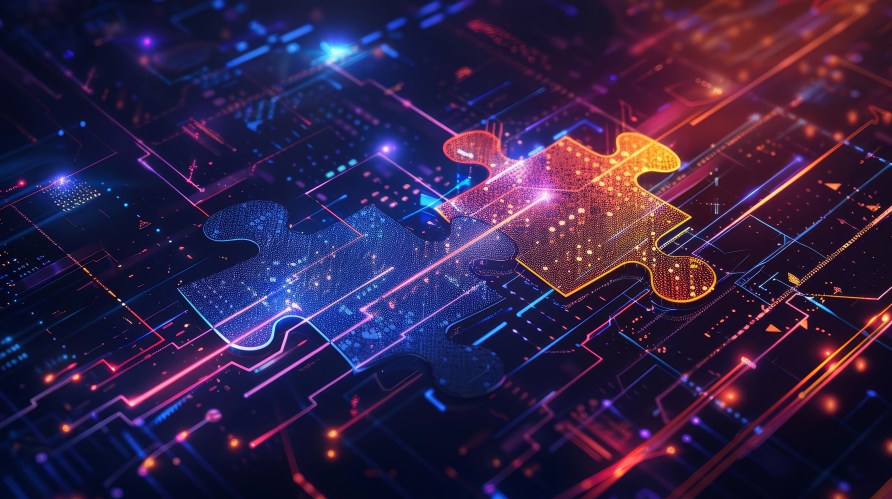AI agents like Agentforce can reason and act autonomously on your behalf, but can they get along with each other? Our recent story unpacked the four levels of agentic maturity and looked at the increasingly sophisticated implementations companies are deploying to production. But getting to Level 4 — multi-agent orchestration — is about more than just innovation and complexity. It requires common industry standards and collaboration between technology vendors. Without a common framework for agents to discover, authenticate, and communicate with one another, the AI agent ecosystem becomes fragmented and siloed — missing the opportunity for richer, end-to-end automation.
The reality is, customers operate in heterogeneous environments with a diverse mix of technologies. While we believe that Agentforce is the best way to build agents, we also recognize that there are plenty of other ways to do so through frameworks like Langgraph, AutoGen, OpenAI’s Assistant API, CrewAI, LlamaIndex, and others. We’re committed to ensuring interoperability with Agentforce, regardless of what tools you use to build your agents.
That’s why we partnered with Google and 50 other leading technology vendors to support the rollout of A2A, the industry’s first agent-to-agent interoperability protocol. Salesforce played a pivotal role by contributing the concept of an Agent Card — a lightweight JSON contract that communicates an agent’s capabilities, identity, compliance tags, and Trust Score. The Google product team adopted the concept in its A2A specification, citing Agent Card as the keystone for capability discovery and version negotiation.
Why agent interoperability matters
An agent-to-agent interoperability protocol provides the foundation for cross-vendor collaboration, security, and scalability, enabling seamless orchestration of diverse intelligent services in a unified environment. By establishing a standard around how agents identify themselves, exchange data, and coordinate multi-step workflows, the industry ensures that new AI solutions can plug into existing infrastructure in a secure and scalable way, fostering innovation and collaboration rather than fragmented point solutions.
An interoperability protocol will break down vendor silos, allowing service, sales, marketing, and IT agents to share context regardless of what agent or runtime they’re using. It will accelerate time-to-value by enabling the reuse of existing agents instead of rebuilding them for every platform. Additionally, it will reduce integration costs since a single open protocol is more efficient than dozens of custom adapters and complex, often brittle APIs. Finally, it will enhance governance through unified observability and policy enforcement across every agent interaction, ensuring administrators remain in control.
Here’s how we’re envisioning interoperable architecture with Agentforce at the core:

10 foundational building blocks for agent interoperability
So, how does this all work behind the scenes? To ensure that agents can interact in a scalable and trusted way, we’ve developed a set of common building blocks designed to facilitate core tasks, like helping agents locate and identify each other, communicate and process information. These 10 elements are the north star guiding our efforts to create a shared standard for agent-to-agent interoperability.
- Getting to know our agents (Agent Metadata Card): Imagine each agent has its own business card. This card tells you everything you need to know – who it is, what it’s good at (and not so good at!), how it fits into the bigger picture, and even some technical details about how it talks to others. This makes it clear who’s who and what they can do.
- Keeping things secure (Identity & Authorization – RBAC): Just like you need a keycard to get into certain parts of an office, agents also need clear access controls. This ensures that agents only have access to the information and tools they actually need to do their jobs.
- Helping agents find each other (Registry & Discovery): Think of this as a dynamic address book for agents. Whenever a new agent comes online or gets an update, it automatically registers itself. This makes it easy for other systems to find the right agent for the task, kind of like automatically finding the best person on your team for a specific project.
- Speaking the same language (Communication Patterns): Agents need to be able to talk to each other, and sometimes they need to have a quick chat (like a phone call), while other times they can just send messages back and forth. A shared protocol ensures they can communicate in different ways to handle all sorts of situations efficiently.
- Building trust (Agent Trust Score): To get the most out of agents, users need to be able to trust them. A “trust score” can measure factors like how ethically an agent operates, how securely they handle data, and how closely they follow important rules.
- Remembering what was said (State & Conversation Management): In a multi-agent landscape, continuity means everything. Using a specialized “conversation ID,” agents can keep track of ongoing interactions, even if different agents jump in to help. They’ll also be able to instantly recall past conversations.
- Handling different kinds of information (Multimodal Support): Agents are increasingly moving from text-only conversations to rich, multimedia interactions with voice, pictures, and videos. A shared standard can support these emerging interactive experiences in a consistent way.
- Keeping an eye on things (Observability & Auditability): A comprehensive monitoring system is essential as agents begin to work together on increasingly complex tasks. Organizations need a way to track how agents are performing, identify any issues and review past actions. This is crucial for regulatory compliance and maintaining reliability and efficiency.
- Locking down security (Security & Compliance): None of this works without enterprise-grade security. Agents should use strong encryption by default, automatically mask sensitive information and integrate robust threat detection systems.
- Staying responsive (Scalability & Performance): Just like a website needs to handle lots of visitors at once, agents need to be able to handle surges in demand. Through design features like horizontal scaling and queue-backed buffering, agents can scale up as needed and manage a high volume of requests without slowing down.
How does agent interoperability work in practice?
Let’s take a look at some real-world scenarios to get a sense of how agent interoperability would work in areas like customer service and sales.
Customer Service: Imagine a customer needs to return a damaged product. The retailer’s Agentforce Service Agent handles the initial request and communicates with the manufacturer’s Agentforce Return Specialist Agent to assess the damage based on customer-provided photos. Simultaneously, it consults the logistics partner’s Agentforce Policy Agent to determine return shipping protocols. This coordinated effort ensures a swift and efficient resolution for the customer.
Sales: In a B2B scenario, a retailer’s Agentforce Sales Agent identifies a potential partnership opportunity. It then reaches out to a prospective partner’s Sales Agent to align on product offerings, pricing, and distribution logistics. Together, they draft a tailored proposal, schedule meetings between human sales representatives, and plan joint promotional campaigns. This collaboration accelerates how quickly partnerships can form and enhances alignment between both companies.
Marketing: A wholesaler’s Agentforce Marketing Agent identifies which prospects are ready to purchase by looking at CRM interactions. It then triggers Google’s Ad agent to deliver personalized ads in Google Search. This seamless integration helps engage customers with tailored messaging at just the right moment,enhancing engagement and driving sales.
Financial Services: A wealth management firm uses an Agentforce Financial Agent to deliver personalized investment advice tailored to each client’s financial goals and risk tolerance. Before presenting these recommendations, the financial agent reviews them with a 3rd party compliance agent to ensure they align with ethical standards and comply with regulatory requirements. This collaboration ensures that clients receive investment strategies that are both customized and ethically sound.
To learn more, check out our session from Google Cloud Next 2025, where we dive deep into the future of multi-agent collaboration and interoperability.













